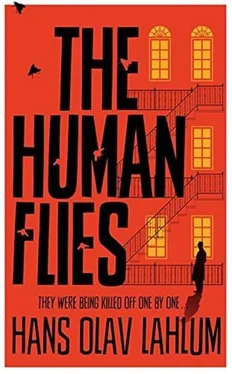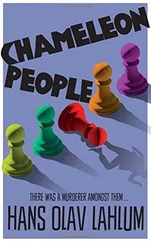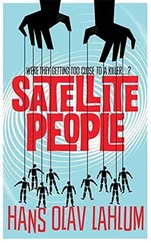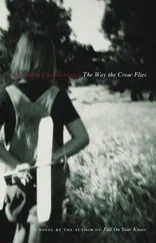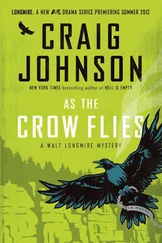Olesen’s neighbour on the second floor was an American by the name of Darrell Williams whom the caretaker’s wife believed to be in his early forties. He had been living there for no longer than eight months, and the rent was paid by the American Embassy. The caretaker’s wife had never actually asked what he did at the embassy, but thought that he held a senior position – she described Williams as someone who was ‘always well dressed and no doubt important’. He also spoke very good Norwegian after only a few weeks. Darrell Williams went to work first thing in the morning and often came back late in the evening, but never brought home guests.
Miss Sara Sundqvist lived in the flat below Olesen. She was a young Swedish student who had been there since the start of the academic year in August, and had surprised the caretaker’s wife with flowers and chocolates when she moved in. Sara Sundqvist was well dressed and elegant. At times she perhaps seemed distant, but always smiled and greeted her. Miss Sundqvist took her studies very seriously and lived a rather regulated life. She usually left between eight and nine in the morning and came home between three and five in the afternoon. During the first few months, one or more of her fellow students had sometimes come to visit. They always behaved impeccably and left well before eleven.
Sara Sundqvist had clearly charmed the caretaker’s wife, and yet there was something about her face that led me to believe that she was hiding something. A rather stiff expression that remained when she went on to talk about the young husband and wife, Kristian and Karen Lund, who lived in the flat to the left on the first floor. They were a friendly and helpful couple who seemed so very much in love, even after the birth of their first child. The Lunds had moved in two years ago as newly-weds and now had a son who was just over one. Mrs Lund was twenty-five years old and the daughter of a factory owner from one of the most desirable parts of Oslo. Her husband was a couple of years older and was the manager of a sports shop in Hammersborg.
A taxi driver lived in the flat to the left on the ground floor. Konrad Jensen was in his fifties and was not married. The caretaker’s wife had heard from one of her nephews, who was also a taxi driver, that Konrad Jensen drove one of the oldest taxis in Oslo but still managed to negotiate the city’s many confusing side streets more quickly than most of his colleagues. Konrad Jensen worked hard and often long hours. Otherwise, he only went out to the odd sports event. As far as the caretaker’s wife could remember, he had never received any visitors in the twenty years that he had lived there.
The caretaker’s wife opened and closed her mouth a couple of times after she had spoken about Konrad Jensen. Again, something unsaid was left hanging in the air. I had no idea what, but for the moment there was no need to push the caretaker’s wife any further on it.
The final resident lived in the ground-floor flat to the right and was a wheelchair-bound man by the name of Andreas Gullestad. He was around forty years old and, as far as the caretaker’s wife could understand, was a rentier who lived on his inheritance. This must have been fairly substantial as he was always elegantly dressed and lived an apparently carefree life, with the exception of his physical handicap. Despite his difficulties, he was always in good humour and friendly to anyone he met. He had moved here from the better side of town three years ago, after the building had been done up. As a result of an accident shortly before that time, he was now dependent on a wheelchair, so was happy to find an easily accessible flat on the ground floor. Gullestad was the only person, apart from Harald Olesen, who had accepted the property owner’s offer to buy the flat.
Andreas Gullestad’s sister and niece sometimes came to visit, but otherwise he lived a quiet and perhaps rather lonely life. He sometimes ventured out onto the street in summer when the weather was good, but in winter preferred to stay indoors and often asked the caretaker’s wife to do his weekly shopping. He paid her generously for this and always presented her and her husband with gifts at Christmas and on their birthdays. As far as the caretaker’s wife could understand, Gullestad was unable to move around without a wheelchair, but he still seemed to have use of his upper body and arms. And there was certainly nothing wrong with his head: he was an exceptionally intelligent and knowledgeable man.
Fortuitously, the caretaker’s wife had not only been sitting at her post all afternoon and evening on the day of the murder, but had also made note of the residents’ comings and goings. Harald Olesen had himself been out to the shops in the morning, but had come back around midday and then stayed at home for the final ten hours of his life. No one had phoned him. The only registered phone calls of any interest from the weeks before his death were several calls to and from his lawyer at the firm Running, R0nning & R0nning.
As far as the other neighbours were concerned, the wheelchair-bound Andreas Gullestad had as usual been at home all day. Mrs Lund had stayed in with her young son. According to the caretaker’s wife, Mr Lund had left at around eight in the morning and not returned until nine o’clock in the evening. The only phone call to the Lunds’ flat was when he called home around four hours before that. Sara Sundqvist had gone out to a morning lecture at half past nine and come home again at a quarter past four. Darrell Williams had gone out just before nine in the morning and come back just before eight in the evening. Konrad Jensen was working a late shift that week. He left in his car around midday and came in the door only a few steps behind Williams. The only resident the caretaker’s wife had registered leaving the building again later was Darrell Williams. He had gone out for an evening stroll at five to ten and returned fifteen minutes later.
The caretaker’s wife had not seen any strangers in the building on the day of the murder and it was highly unlikely that anyone would have managed to sneak past without being seen. Only she and the residents had a key to the back door. Everyone else had to come in through the front entrance and past her. And on Thursday, 4 April she had been able to see the back door more or less constantly for the six hours prior to the murder.
Before I left her, I asked the caretaker’s wife whether she had noticed anything unusual from her post, especially in the hours before and after the murder.
‘There is one thing,’ she replied, and got up. She indicated that I should follow her into a small back room.
On the table was a large blue raincoat with a hood and a red scarf.
‘I found both of these on top of the rubbish bin by the back door this morning. I’ve never seen any of the residents wearing either the raincoat or the scarf. Both items look more or less brand new, and they both appear to have been washed before they were thrown away, because they are still damp. I didn’t see anyone throwing them away, but they were not there when I went to throw out some leftovers early yesterday afternoon. That’s certainly worth mentioning, isn’t it?’
And I had to agree with her. It was definitely unusual enough to mention that someone had thrown away an almost new and recently washed raincoat on the very day that there was a murder in the building. The blue raincoat was immediately added to my list of questions to ask the residents.
So, Darrell Williams lived in Flat 3B. He was a large, dark-haired American with a firm handshake and an unexpectedly pleasant voice. He showed me his diplomat’s passport, which gave his age as forty-five, though he looked younger. He was at least six foot tall and no doubt weighed well over fifteen stone, but still had little surplus fat. He spoke remarkably good Norwegian, with only the faintest American twang.
Читать дальше
